
- Volkswagen Group Research showcases driver-assistance technology of the future
- Smart automobiles will help prevent serious accidents

The future belongs to innovative driver-assistance technology. Sooner or later, these systems will revolutionise active vehicle safety - much in the same spectacular way that electronic stabilisation programs (ESP) have recently done.
Matthias Rabe, head of Group Research at Volkswagen AG, says, "Tests conducted by Volkswagen's accident research unit show that ESP can reduce the risk of losing control of a vehicle by as much as 80 percent.” It is at precisely this juncture that the new systems come into play. Their objective is to prevent accidents using control technology such as an automatic emergency brake assist (BA) or the attention control feature hat keeps drivers from falling asleep at the wheel. For the first time ever, Volkswagen AG now presents nine such future systems, and in doing so reveals how the vision of a car smart enough to prevent accidents will become reality in the near future.
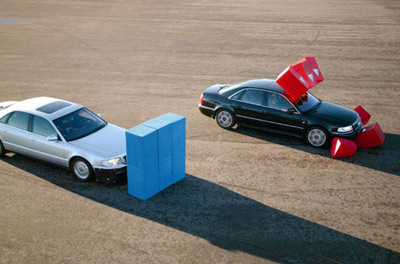
Driver-assistance systems of the future:
Work is ongoing to refine the automatic emergency brake assist (ANB - Automatische Notbremse) developed on the basis of engineering solutions already being applied in series production. Vehicles featuring this system will be equipped with the radar sensor used in automatic distance control systems. This sensor provides information on the distance to the vehicle ahead or to any obstructions. Hence, if the ANB should conclude that a braking manoeuvre could reduce the impact of an impending accident, it will initiate a hard stop in order to keep the severity of the accident to a minimum.
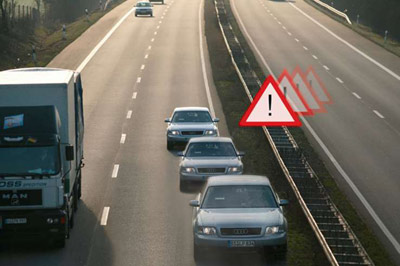
According to an analysis undertaken by the Volkswagen accident research unit, 18 percent of all accidents are attributable to drivers veering off the road. Volkswagen accident research has now come up with a system to counteract this phenomenon: the lane departure warning system (or LDW), which is already close to reaching series maturity. This assistance feature can identify a vehicle's position in relation to lane boundary markings by way of cameras integrated into the vehicle. If the vehicle should deviate too strongly from its ideal course of travel, the system will send out a warning to the driver before he potentially goes off the road.
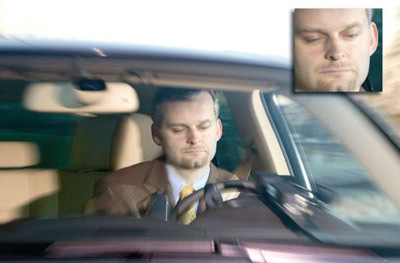
And a camera installed in the cockpit to monitor the driver's blinking movements will also eventually help to save lives, given that 25 percent of all road deaths are attributable to the sleepiness of drivers. The attention control system developed by Volkswagen Group Research is aimed at eliminating the risk of driver inattentiveness. The camera keeps a constant track of the frequency and duration of eyelid movement. If it perceives the driver to be at risk of sleepiness, the system will warn the driver ahead of time to take a break from driving and recover to a state of full attention.
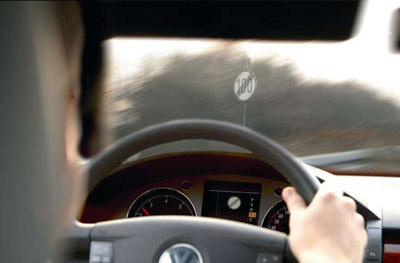
Prescribed speed limits can often change during the course of travel along a road, and the road signs are not always easy to follow. The traffic signs recognition system developed by Volkswagen Group Research will offer a new quality of comfort and safety in this area. The system incorporates a digital display which informs the driver of all the respectively applicable road signs along the motorway.
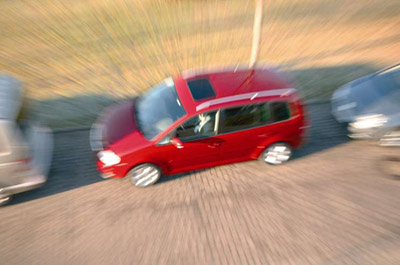
The automatic distance control (ADC) already used in the Volkswagen Phaeton and the Audi A8 is activated when the speed control system determines the need for driver response. The next-generation ADC+F2S (F2S = follow to stop)system will be able to automatically bring the vehicle to a full stop behind the car ahead if necessary. It will also be possible to generate a collision warning, to brake ahead of a stationary obstacle, to identify bends in the road ahead and to perform light braking manoeuvres ahead of curves.
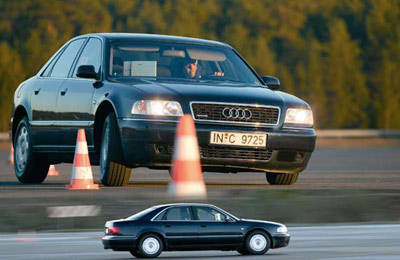
The job of the integral handling control system is to integrally regulate all active components (drive, brakes, steering, running gear) in any given situation. What makes this system so revolutionary in comparison to the active vehicle stability control systems used today - primarily in borderline situations - is the continued optimisation of vehicle handling and the fact that such handling can be easily individualised, meaning software is used which enables a vehicle's running gear to be variously set from sporty to comfort handling at the mere push of a button.
A system developed by Volkswagen Group Research allows drivers to choose between the assisted or automatic parking features. As the vehicle passes a parking spot, the system ascertains the dimensions of the available space and of any obstacles. Once it has evaluated this sensory data, it automatically calculates the ideal parking manoeuvre. The driver then presses the button which activates the parking assistant, and the car steers itself into the space in reverse gear.
The project to develop a system which perceives vehicle surroundings involves recording a complete take of all surroundings (360 degrees) using all available sensory data and combining this data to create a holistic model of the vehicle environment. The data generated provides a picture of the ambient setting and the given situation in such a way that the driver assistance systems will be able to identify any risks (e.g. blind spots before a lane change).
The perception of vehicle surroundings requires incorporation of a further system - one, however, which can also function independently. It is the enhanced night vision system. This system uses an infrared unit to identify pedestrians or any possible sources of hazard. After identifying pedestrians and their position or distance from the vehicle, the system informs the driver of the potential risk they pose.